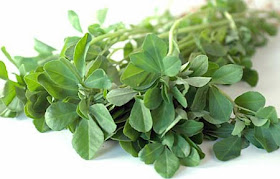.jpg) |
| Turmeric offers Multiple Health Benefits |
Turmeric (Curcuma longa) is a perennial herb of the Zingiberaceae or ginger family. Native to South Asia, it is a cultigen and has not yet been found in the wild. However, it is believed to be indigenous to India, where it has long been used both as a spice and as a dye. From India, it is likely that that plant spread to South-East Asia and gradually to East Asia, particularly China. Owing to its multiple health benefits, turmeric is extensively used as a food preservative, spice, and coloring agent in various parts of the world. It is considered as auspicious and is a part of religious rituals in countries like India.
 |
| Turmeric Rhizomes |
Turmeric is rich source of carbohydrates, proteins, fats, minerals and essential oils. Curcumin, one of the bioactive components of turmeric, is anti inflammatory, antibacterial, antioxidant, antimutagenic, anticoagulant, cholagogueue, diuretic, depurative, antidiabetic & antifungal in nature.
The plant known for its therapeutic & medicinal virtues, has been used as a traditional remedy for curing various illnesses. Find here some of the simple and effective Natural Remedies with turmeric:
 |
| A Healthy Spice used for Preparations in Indian Kitchens |
- Application of a paste prepared from turmeric rhizome & neem leaves twice a day, dries out Acne. Mixing a tbsp each of fuller’s earth & sandalwood powder with ½ tsp of turmeric is also a known remedy for curing acne.
- To cure Asthma, have 1/4th tsp of turmeric powder with hot water.
- Drinking a glass of milk with ½ tsp of turmeric powder is effective against Arthritis.
- Prepare a paste of 1/4th tsp of turmeric powder and black pepper in clarified butter & massage it on the chest to relieve symptoms of Bronchitis.
- Boiling 1/4th tsp of turmeric in a glass of water and gargling with the same (twice a day) cures Blisters in the mouth.
- Regular consumption of turmeric in foods eases Morning stiffness, reduces Pain & Joint swelling.
- Application of turmeric powder with lime comforts Swelling and pain in Bruises.Applying a paste of turmeric powder and salt in clarified butter is also known to provide relief in bruises.
- Adding turmeric to a glass of milk or making it a part of daily cooking, would help in the breakdown of dietary fat, & hence, help in Controlling weight.
- Regular use of turmeric in food acts as an anti-mutagenic agent by reducing the chances of occurrence of types of Cancer (lung, colon, breast and prostrate cancer).
- A tsp of turmeric, 1/4th tsp of carom seeds & honey taken with hot water cures Cough & cold.
- Licking 1 tsp turmeric powder with ½ tsp of honey is believed to eliminate Chest congestion.
- For keeping a check on Diabetes, mix ½ tsp each of turmeric and bay leaves powder in a tbsp of aloe vera gel. Take this mixture twice daily before meals.
- To treat Eczema, drink a glass of milk with ½ tsp turmeric powder daily.
- Turmeric also helps to prevent Heart attacks /strokes if consumed daily in food diet. It helps in eliminating the LDL or bad cholesterol from the body. .
- Taking ½ tsp of turmeric powder with 1/4th tsp of black pepper & cardamom each after every meal is beneficial in Indigestion & Acidity.
- Having a tsp of turmeric with warm milk/ hot water and honey twice daily is effective in Jaundice.
- Application of paste of turmeric prepared in sesame oil helps prevent Skin eruptions
- To treat Small pox, prepare a paste by mixing turmeric powder, milk cream & wheat flour in mustard oil. Apply the same over the affected part two times daily. Also consuming a tsp of turmeric powder and tamarind for 5 days would fasten healing.
- Roast turmeric powder & massage the aching tooth to get relief of swelling & pain. Filling the cavity with roasted ground turmeric powder provides temporary relief in Toothaches.
- Roast about 15 g of turmeric powder in mustard oil and use it for fomentation in case of Tonsillitis.
- Drinking a cup of milk with ½ tsp of turmeric twice a day helps in quick healing of the wounds.
Visit 'HerbHealth' Blog for more articles on Herbs and Health at http://drgarimasancheti.blogspot.in/



.jpg)










.jpeg)



